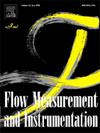Geometric shape characterization-based algorithm for electrical impedance tomography reconstruction
IF 2.7
3区 工程技术
Q2 ENGINEERING, MECHANICAL
引用次数: 0
Abstract
Due to the advantages of B-spline curves in geometric modeling, this paper proposes an electrical impedance tomography (EIT) reconstruction algorithm based on geometric shape characterization (GSC). First, the method uses Density-Based Spatial Clustering of Applications with Noise (DBSCAN) to estimate the number and location of unknown inclusions within the measurement field. Based on this information, the conductivity reconstruction is formulated as an optimization problem involving the adjustment of B-spline curve control points, which is then solved iteratively using the Gauss–Newton (GN) and Levenberg–Marquardt (LM) algorithms. Both simulation and experimental results demonstrate that, compared to traditional image reconstruction methods, the B-spline-based approach enhances reconstructed image quality while preserving detail features of inclusions. Additionally, it achieves better reconstruction performance and noise robustness, with quantitative metrics such as the Spearman correlation coefficient, SSIM, and overlap rate consistently exceeding 0.9. The introduction of B-spline curves to construct regularization terms or to provide prior information reduces the ill-posedness and uncertainty of the inversion, thereby improving the quality and stability of the results. The code is available at GitHub.
基于几何形状特征的电阻抗层析成像重建算法
鉴于b样条曲线在几何建模方面的优势,本文提出了一种基于几何形状表征(GSC)的电阻抗层析成像(EIT)重建算法。首先,该方法使用基于密度的带噪声应用空间聚类(DBSCAN)来估计测量域中未知夹杂物的数量和位置。基于这些信息,将电导率重建描述为涉及b样条曲线控制点调整的优化问题,然后使用高斯-牛顿(GN)和Levenberg-Marquardt (LM)算法迭代求解。仿真和实验结果表明,与传统的图像重建方法相比,基于b样条的方法在保留夹杂物细节特征的同时,提高了重建图像的质量。此外,该方法具有更好的重构性能和噪声鲁棒性,Spearman相关系数、SSIM、重叠率等定量指标均超过0.9。引入b样条曲线来构造正则化项或提供先验信息,减少了反演的病态性和不确定性,从而提高了结果的质量和稳定性。代码可在GitHub上获得。
本文章由计算机程序翻译,如有差异,请以英文原文为准。
求助全文
约1分钟内获得全文
求助全文
来源期刊

Flow Measurement and Instrumentation
工程技术-工程:机械
CiteScore
4.30
自引率
13.60%
发文量
123
审稿时长
6 months
期刊介绍:
Flow Measurement and Instrumentation is dedicated to disseminating the latest research results on all aspects of flow measurement, in both closed conduits and open channels. The design of flow measurement systems involves a wide variety of multidisciplinary activities including modelling the flow sensor, the fluid flow and the sensor/fluid interactions through the use of computation techniques; the development of advanced transducer systems and their associated signal processing and the laboratory and field assessment of the overall system under ideal and disturbed conditions.
FMI is the essential forum for critical information exchange, and contributions are particularly encouraged in the following areas of interest:
Modelling: the application of mathematical and computational modelling to the interaction of fluid dynamics with flowmeters, including flowmeter behaviour, improved flowmeter design and installation problems. Application of CAD/CAE techniques to flowmeter modelling are eligible.
Design and development: the detailed design of the flowmeter head and/or signal processing aspects of novel flowmeters. Emphasis is given to papers identifying new sensor configurations, multisensor flow measurement systems, non-intrusive flow metering techniques and the application of microelectronic techniques in smart or intelligent systems.
Calibration techniques: including descriptions of new or existing calibration facilities and techniques, calibration data from different flowmeter types, and calibration intercomparison data from different laboratories.
Installation effect data: dealing with the effects of non-ideal flow conditions on flowmeters. Papers combining a theoretical understanding of flowmeter behaviour with experimental work are particularly welcome.
 求助内容:
求助内容: 应助结果提醒方式:
应助结果提醒方式:


